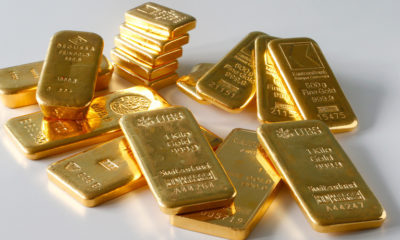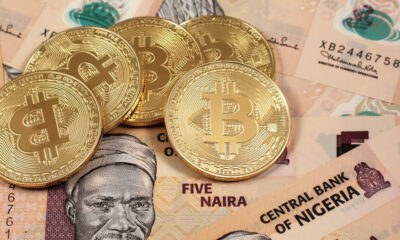A market perpetually looking for reasons to temper Federal Reserve hiking expectations (so they can buy equities), had those quashed on Friday. US headline inflation accelerated to 8.60% YoY from 8.30% previously, with core inflation holding at 6.0%, slightly lower than April’s 6.0%. That sparked a scramble to reassess Fed hiking expectations, with some calling for a 0.75% hike at this week’s FOMC meeting.
Equities were sold heavily while the US yield curve saw short-dated yields shoot higher while the 10-year to 30-year was also sold. That has left the 2/10-year tenor at just 10 basis points and 2/30-year at just 16 basis points. That is uncomfortably close to flat and with the R-word now on everyone’s lips, we can’t rule out the possibility of an inversion, which markets use as a signal for a recession. The 5/10-year already is.
With higher yields and markets running for cover, the US Dollar soared, with the Euro getting pummelled along with fellow sentiment indicators, the Australian Dollar, New Zealand Dollar and the Korean Won. Oil has also retreated again today as a US recession is complicated by mass covid-19 testing over the weekend in Beijing and Shanghai. I’ll say it again, under covid-zero policies, the virus only has to get lucky once and anyone trying to pick the bottom in China’s growth and equity markets on the basis that China was “one and done” on lockdowns is naïve.
It is turning into a Black Monday in Asia as well after US and European equity markets were pummelled on Friday, as China risks also rise again. US equity index futures have continued their selloff this morning, oil continues to fall, the US Dollar has risen as Asian currencies play catchup to Friday’s greenback rally, and Asian equity markets are taking some serious selling pressure.
It is a measure of how quickly sentiment has turned that gold managed to disengage itself from its inverse correlation on Friday, finishing the day higher at $1871.50 an ounce. That indicates just how nervous investors out there are now, although I would like to see another positive close in the face of US Dollar strength and higher US yields before calling a medium-term low. Given that gold has fallen in Asia, I am not so sure that this isn’t another false dawn for gold bugs.
Perhaps the biggest carnage has been in the crypto space which is on the verge of a reckoning now that the gloves are off around global inflation and the realities of a new world where fixed interest actually pays a yield – albeit one still deeply negative in real terms. Bitcoin fell by around 10% over the weekend, while Ethereum was cremated, falling by around 20%. That sell-off also continues this morning and I am wondering if some cross-margining stop losses are going to start washing through real asset classes. Things may get uglier if the pegs on (un)stable coins like tether start becoming untethered.
Today’s data calendar is non-existent, which means markets will be allowed to continue stewing in sentiment and risk aversion. Australian markets are closed today, but looking at the price action around Asia, they may be glad they are.
This week’s centrepiece is undoubtedly the FOMC policy meeting this Wednesday (NYT). I am not sure if Friday’s inflation reading is enough to provoke a 0.75% rate hike, although that won’t stop people from forecasting it. A 0.50% hike is done and dusted, and the crucial point will be what the Fed’s outlook is from here and whether they remain confident about a soft landing. The post-meeting press conference will surely be one of the most exciting of the year.
Elsewhere, China will release its latest Medium Lending Facility rate sometime between today and Thursday. Cutting it from 2.85% would be a surprise (not a huge surprise), as the government remains intent on targeted stimulus and bank lending has already soared after the government ordered the banks to lend more.
The Federal Reserve is not the only central bank with a policy decision this week. The Swiss National bank on Thursday would love to raise rates from -0.75% I am sure, but with risk aversion lifting the Swiss Franc the Euro falling once again, it is boxed in. The Bank of England also meets on Thursday and markets are pricing in a 0.25% hike to 1.25%. Talk of 0.50% will come to nought as the BOE has raised the white flag on inflation already.
Perhaps the most interesting one, which is usually the most boring, is the Bank of Japan on Friday. A continuation of the quantitative easing forever and the 0.25% cap on 10-year JGB yields is expected. However, USD/JPY has hit 135.00 this morning and if it reaches for 138.00 this week, the temptation/need to tinker with the JGB yield corridor may become irresistible. Despite all the rhetoric to the opposite recently, I don’t fully discount the mother of all spoofs occurring on Friday. Given the amount of long USD/JPY positioning out there, a slight hike in the JGB yield cap could see an ugly washout, maybe even back to the 130.00 region or lower. Wouldn’t that be something?
Equity sell-off continues in Asia.
On Friday, the higher-than-expected US inflation data dissolved hopes of a less aggressive FOMC, prompting a mass sell-off of equity markets in the US and Europe. The S&P 500 slumped by 2.91%, the Nasdaq tumbled by 3.52%, and the Dow Jones fell by 2.73%. things aren’t looking any better with US futures in Asia today, as the selling continues, perhaps with one eye on the weekend crypto meltdown. S&P 500 futures are 1.40% lower, Nasdaq futures have fallen by 1.80%, and Dow futures are 1.0% lower.
Obviously, the slump by Wall Street has provoked a negative reaction in Asian markets today, and mass testing in China over the weekend has lockdown nerves elevated once again. Japan’s Nikkei 225 has tumbled by 2.70%, with South Korea’s Kospi doing slightly worse, retreating by 2.75%, while Taiwan is down by 2.25%.
In Mainland China, the Shanghai Composite is 0.85% lower, with the CSI 300 down by 0.95%. There is no solace for Hong Kong, the Hang Seng has slumped by 2.90% today. In regional markets, Singapore is 0.65% lower, Kuala Lumpur is down by 1.50%, and Jakarta has retreated by 1.95%. Bangkok has lost 1.25%, and Manila is 0.55% lower. Australian markets are closed, but New Zealand has slumped by 2.30%.
Given the price action seen today in Asia, especially the continuing selloff of US index futures, it is unlikely that European markets will look to buy the dip. More likely is that they will continue to jail without passing go. Even the perpetually bullish FOMO gnomes of Wall Street may struggle to find a reason to buy the dip this afternoon, especially if the US yield curve continues to flatten.
Haven buying lifts the US Dollar.
The US inflation data spurred a sharp rise in US yields across the curve, a selloff by equities, and in turn, a haven-derived rush into US Dollar. The dollar index tore through resistance at 104.00 on its way to a 0.85% gain to 104.18 on Friday, rising another 0.26% to 104.46 in Asia. The index looks to have formed a medium-term low now as the reality of monetary policy divergence permeates the financial world. The dollar index will now have 105.00 in its sights with support at 104.00 and 103.00.
EUR/USD slumped on Friday, carving through support at 1.0600, almost reaching my 1.0500 targets for this week. It finished 0.93% lower at 1.0520 and has fallen another 0.30% to 1.0490 in Asia. With the ECB only likely to hike a total of 0.50% by September, with the Fed likely to have booked 1.50% of hikes by then, it is no surprise that the single currency has resumed its selloff. The fact that EUR/USD never seriously attempted to regain its multi-decade breakout around 1.0800 suggests that a medium-term high is now in place. Weekend developments in Ukraine were not good news either, and that is likely to further sap sentiment. EUR/USD has resistance at 1.0610 initially, with support at 1.0460.
Sterling fell by 1.43% to 1.2320 on Friday on widening yield expectations from the BOE and the Fed. In Asia, GBP/USD has fallen another 0.23% to 1.2290. Resistance is distant at 1.2425, while a retest of the May lows around 1.2150 has become a distinct possibility.
Quite surprisingly, given the move in US yields on Friday, USD/JPY was almost unchanged at 134.40, before rising 50 points to 134.90 in Asia today. I suspect the broad selloff across asset markets on Friday provoked quite a lot of haven-derived yen repatriation by Japanese investors, capping USD/JPY’s gains. That has ebbed today, allowing the USD/JPY rally to resume. A daily close above 135.00 suggests more gains to 138.00 in the week ahead, while only a fall below 133.00 changes the bullish picture. Some nerves around Friday’s BOJ policy meeting may also be tempering USD/JPY gains.
The Australian and New Zealand Dollars held up relatively well on Friday, falling 0.74% to 0.7040, and 0.45% to 0.6355 respectively. An Australian holiday and severe weather in New Zealand are probably muting volumes in both today, sparing further blushes, but I do not rule out a catchup selloff in London this afternoon. AUD/USD has fallen 0.25% to 0.7025 today, with support at 0.7000 and 0.6950, with resistance at 0.7050. NZD/USD has fallen by 0.20% to 0.6340, with support/resistance is at 0.6300 and 0.6450.
USD/Asia has risen sharply today after a mixed performance by Asian currencies on Friday night. USD/CNH rose 0.50% on Friday to 6.7350, climbing 0.30% to 7.6550 today, with onshore USD/CNY has risen by 0.30% today to 7.7370. USD/KRW rallied sharply by 1.23% to 1279.30 on Friday, gaining another 0.60% to 1286.70 this morning. The rest of USD/Asia is higher by between 0.15% to 0.30% this morning and it seems probable that regional central banks are doing a bit of smoothing today. Lower oil prices are modestly supportive, as was a neutral USD/CNY fixing today. However, USD/KRW looks on track to retest 1292.00 and USD/MYR, which gained no benefit from a weaker US Dollar last week, could potentially reach 4.4500 this week. Higher Fed-rate-hike expectations will keep the pressure on Asian currencies this week and renewed lockdowns in China will make the situation darker still.
Recession fears push oil lower.
Oil prices edged lower on Friday as US inflation eroded hopes of a Fed-derived soft landing. The falls were modest though, highlighting that despite economic slowdown nerves, the supply/demand situation remains as stagflationary tight as ever. Brent crude finished 0.83% lower at $121.85 a barrel, and WTI fell just 1.0% to 121.25 a barrel.
In Asia, oil has fallen again, this time after mass testing in Beijing and Shanghai over the weekend raised fears that lockdowns would return, diminishing local demand. Brent crude and WTI have eased by 1.30% to $120.25 and $118.90 a barrel respectively, near Friday’s intraday lows.
Unless US markets move to price in a full-blown recession, and China does actually hit the lockdown button again, it is unlikely that we see an extended sell-off by oil prices. With OPEC+ compliance approaching 200% and the continuing squeeze on refined products such as diesel around the globe, the supply/demand dynamics remain supportive of prices.
In the near term, Brent crude has support at $119.50 and $118.50, with resistance at 122.00 and $124.40 a barrel. Brent crude has traced out four recent daily highs just above $124.00 suggesting further gains will be challenging, even if the downside is limited. WTI has support at $118.00 ad $117.00 a barrel, with resistance at $120.25 and $123.00 a barrel.
Gold rises on haven buying
Gold had an interesting session on Friday, shrugging off higher US yields and a powerful US Dollar rally to record a 1.28% gain to $1871.60 an ounce. Haven buying as equities and cryptos melted down lifted gold as investors parked cash in the yellow metal to hedge weekend risk.
With the new week starting, there unfortunately for gold bugs, seems to be a business as usual air around gold’s price action today. Gold has fallen by 0.46% in Asia to $1863.10 an ounce, as the US Dollar rally continues. Unfortunately, gold does have a habit of teasing gold investors, only to dash hopes with whipsaw corrections lower. I would really like to see another session or two of gold defying a stronger US Dollar before erring to the bullish side after a month of range trading.
With that in mind, I do not discount a continued correction lower and in the bigger picture, gold remains stuck in a $1830.00 to $1880.00 range with its 100-day moving average just above $1890.00 an ounce. Realistically, the technical picture requires a close or two above $1900.00 an ounce to suggest that gold is on the move once again.













